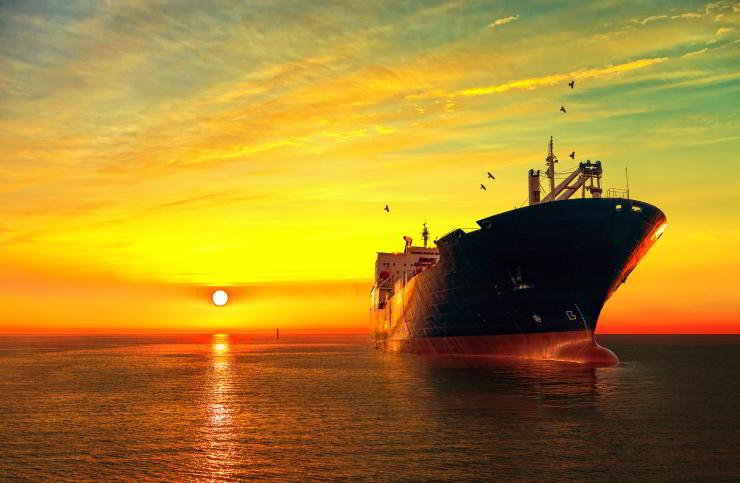New Infrastructure Corridors: Ready, Set, Go?

In a rapidly globalizing world, new trade corridors aim to transform global trade, but their success depends on overcoming challenges, with some built on solid foundations and others on shaky policies.
In a rapidly evolving world, where connectivity serves as the backbone of globalization, there is surprising growth in several new trade corridors that demonstrate innovative political and economic thinking. Some of them may succeed. The India–Middle East–Europe Economic Corridor (IMEC), the Trans-Caspian Middle Corridor, the North-South Transport Corridor (INSTC), and the Iraq Development Road Initiative are emerging with the promise to be transformative trade and transit forces.
However, all of the glittery new trade routes may not prove to be gold. These projects promise to reshape global trade dynamics and geostrategic alignments, addressing connectivity gaps exacerbated by geopolitical upheavals, climate challenges, and shifting economic priorities, but they are works in progress, some must undertake very heavy lifts to succeed. However, some are built on solid foundations while others rely on precarious policy pillars.
Iraq’s Development Road Initiative
Iraq’s ambitious Development Road Initiative is a key example of how connectivity projects can redefine a nation’s role on the global stage. This project aims to connect Asia with Europe via a network of railways, roads, ports, and urban centres. At its heart lies expansion of the Grand Faw Port in southern Iraq, linked to Turkey and extending further into Europe. The Iraq-centric initiative could rival Egypt’s Suez Canal by significantly reducing travel time between Asia and Europe.
The project’s geopolitical implications are profound. By turning Iraq into a transit hub, the needed initiative seeks to strengthen the country’s geopolitical position and contribute to regional prosperity, security, and stability. If successfully implemented, Development Road could transform Iraq from a conflict-scarred nation into a critical player in global logistics. However, Iraq’s unstable political system can be problematic in convincing the key donors and partners the European Union, Türkiye, UAE, and Qatar, as well as international businesses, about the project’s long-term viability.
The India–Middle East–Europe Economic Corridor (IMEC)
While the war in Gaza has temporarily stalled IMEC, this US-led corridor remains a grand vision for connecting India and the EU via the Gulf. Designed to counter China’s influence, IMEC aligns with India’s goal of becoming a global leader among developing nations and escaping Beijing’s strategic encirclement. Simultaneously, the UAE and Saudi Arabia view the corridor as an opportunity to cement their roles as economic bridges between East and West.
If realized, IMEC could bolster Europe’s economic resilience, diversify global trade, and foster cooperation among major powers. By reducing dependency on traditional chokepoints like the Suez Canal, it offers a resilient alternative to maritime routes increasingly vulnerable to climate and geopolitical risks. IMEC could also bring BRICS and G7 countries together if the many partners and investors can coordinate on the various development dynamics tied to diversification and de-risking their economies.
Central Asia and the Middle Corridor
Central Asia and the Caucasus are undergoing a profound transformation, evolving from a peripheral region into a key player in global connectivity, connecting North, South, East, and West through a multi-modal network of rail, road, and sea lanes.
The processes unleashed by Russia’s invasion of Ukraine have accelerated this development. Previously regarded as a remote region dominated by energy exports, the region is now becoming a vital hub for trade and investment and an alternative to Russia’s sanctions-impaired Northern Corridor.
This new Trans-Caspian Middle Corridor connects East with West, from China to Europe via Central Asia, the Caspian Sea, the South Caucasus, and Türkiye, but also expects to link readily with the Global South through a series of new infrastructure investments that are being bolstered through tens of billions of Dollars, Euros, and many other currency investments.
The Middle Corridor has already benefited from investments and historic cooperation from the countries in the region, promising more savings in time and expenditure to come through increased customs harmonization and digitalization of transit processing. The corridor provides a faster alternative to maritime routes, with transit times of 12-15 days from China to the Black Sea as compared to 30-40 days for shipments from China to Europe by sea.
The North-South Corridor (INSTC)
The INSTC links Russia, Iran, and India through Central Asia and the Persian Gulf, offering the promise of a strategic alternative to traditional maritime routes. Premised on the promise of reducing transit times by up to 40% and costs by 30-40%, the corridor connects sanctions-plagued Russia and Iran with the Global South and international sea lanes. While there is a potential to strengthen economic ties among participating nations and to diversify connectivity for landlocked Central Asian states, international sanctions, infrastructure gaps, and political instabilities along the route pose significant risks to INSTC’s viability and remain significant barriers to its full operationalization.
Geo-Political and Geo-Economic Implications
These emerging corridors signify shifting power dynamics in global trade and geopolitics, as new players seek entry points. By providing alternatives to traditional routes, they empower regional players and reduce dependency on dominant powers. The Middle Corridor strengthens Türkiye’s role as a transit hub, connects Central Asia and the Caucasus countries to global markets, and aligns with China’s efforts to diversify trade routes. The INTSC enhances India’s connectivity with Central Asia and positions it as a counterbalance to China in the region, as well as provides Iran and Russia access to trade that reduce the risks of international sanctions.
Iraq’s Development Road repositions Iraq as a global logistics hub, reducing reliance on the Suez Canal, but requires significant political and economic cooperation.
The India–Middle East–Europe Economic Corridor promises connectivity for India, empowerment for Gulf countries as trade-transit countries, and offers Europe another opportunity to diversify supply chains and reduce dependency on Russian routes.
But IMEC is hostage to the war in Gaza and a series of geopolitical instabilities.
The new infrastructure corridors represent a new chapter in global connectivity. They hold the potential to transform trade, strengthen regional integration, and challenge traditional chokepoints like the Suez Canal and the Straits of Malacca. As the world grapples with rising geopolitical tensions and climate challenges, these corridors offer a potential blueprint for resilient and diversified trade networks. However, realizing their promise requires addressing logistical, political, and economic hurdles. While some countries are overcoming the need for historic and groundbreaking cooperation to achieve sustainable development, in other cases, some routes may remain more a promise than a reality. (Photo: Oil tanker ship. 123rf)
Eric Rudenshiold/ISPI



